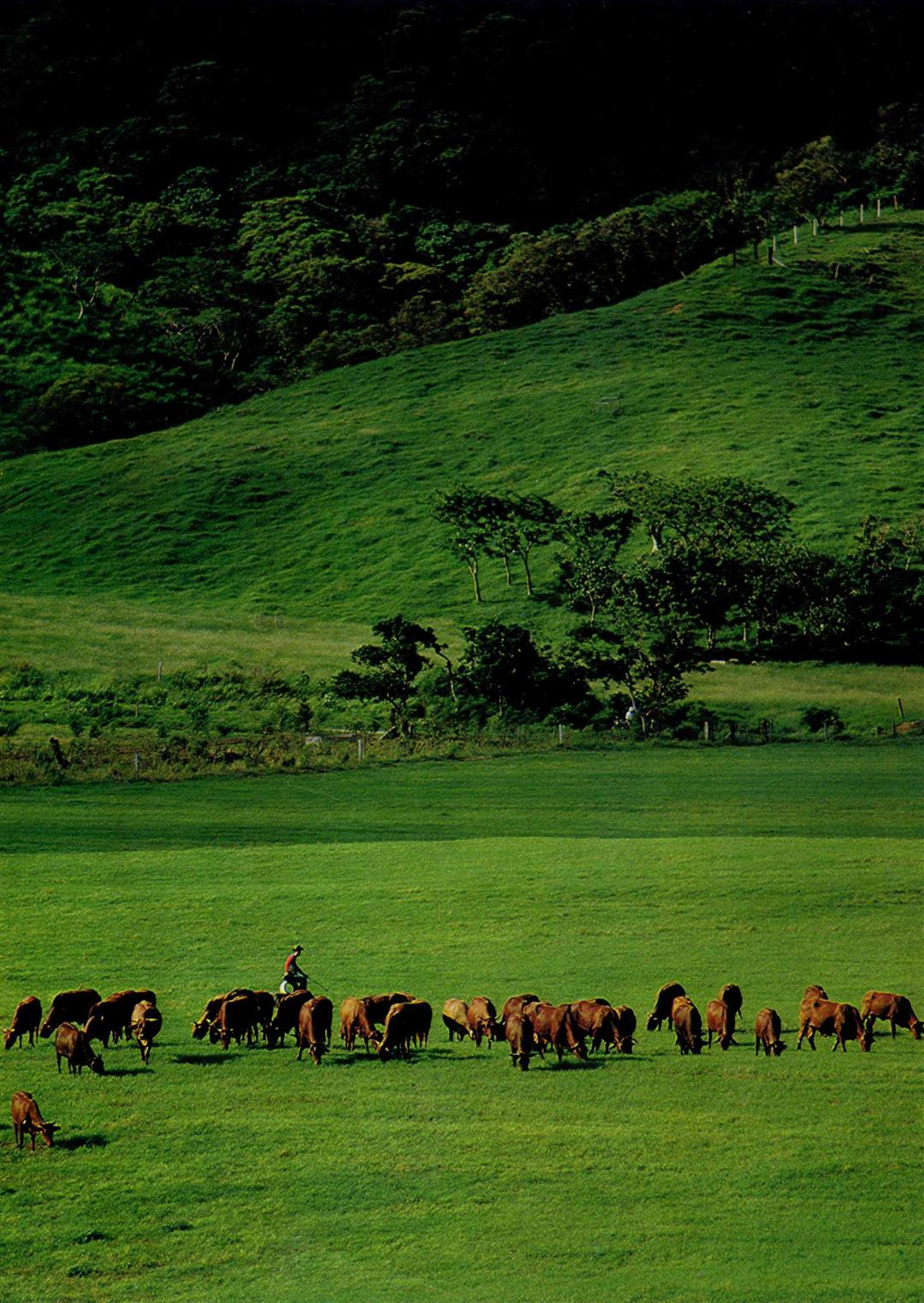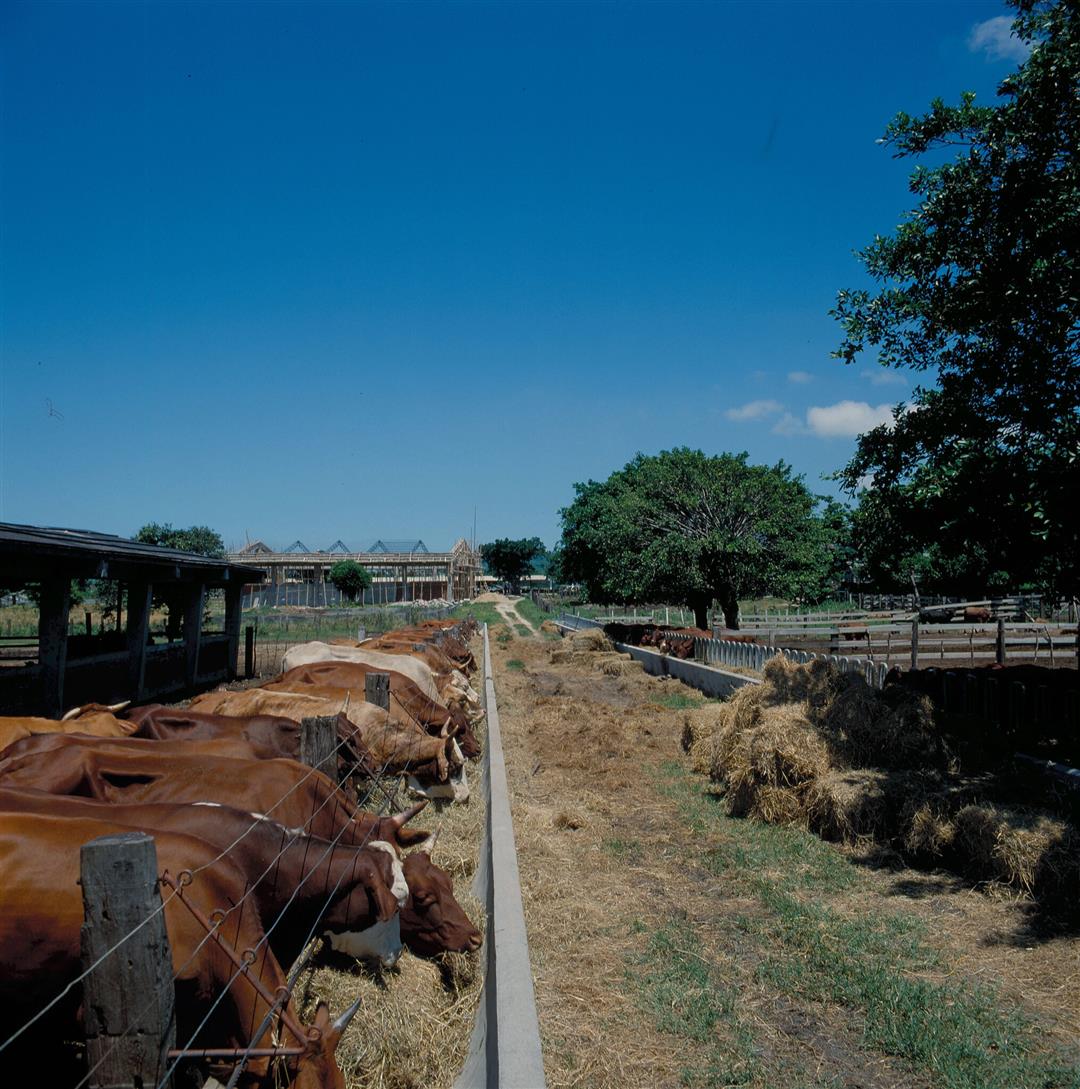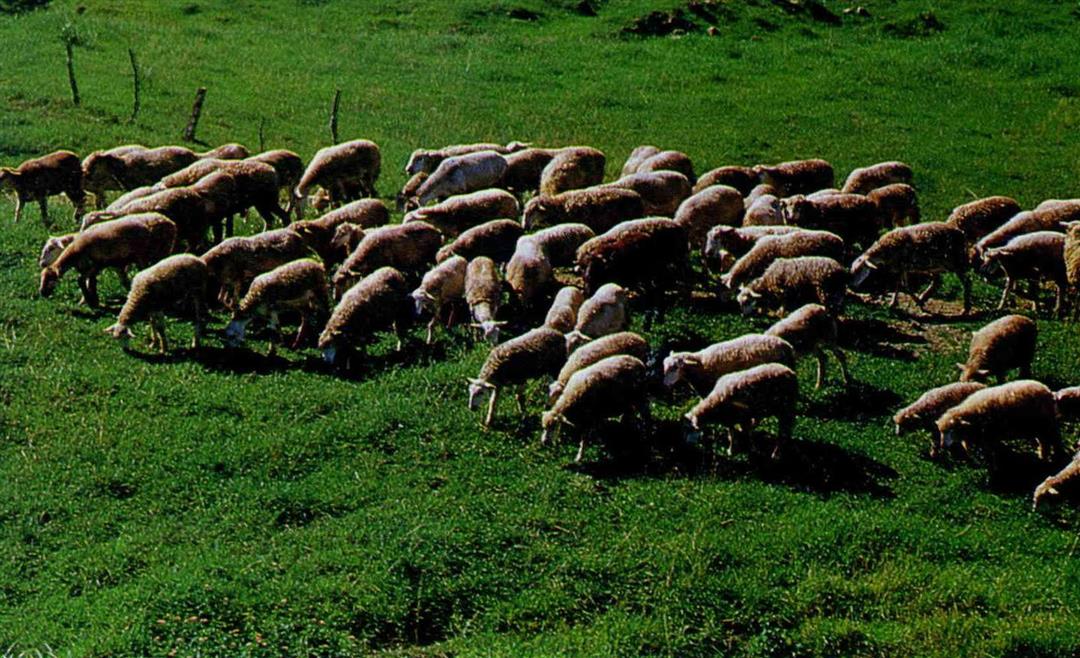Close to the tip of southern Taiwan there is a small town cradled by mountains on three sides and open to the sea on the other. Hengchun is noted for its tropical vegetation, rocky coastline, green rice-fields and groves of coconut trees.
Apart from being the gateway to a famous tourist resort, Hengchun, whose name means "permanent spring" in English, is also the headquarters of the Taiwan Live-stock Research Institute. Here, experiments are carried out to produce better and newer animal and farm products.
As the ox, traditional beast of burden in China, is being replaced by modern agricultural machinery, it is increasingly being used as a source of meat. Yield, however, is low, and research workers at the Hengchun center have been conducting experiments to improve it. As demand for protein has risen in line with higher living standards, a cheaper way of raising cattle has to be found in light of Taiwan's climate.
The ranch hands at the center have an arduous life. They have to tend the herds whatever the weather, and even handle such medical problems as births, on the open plains. They must also be familiar with the latest methods of artificial insemination.
Cows deliver three or four hours after labor begins, following a gestation period which usually lasts for 280 days. All deliveries are done without the assistance of a veterinarian, unless there are special problems. After the calf is born, the mother will sever its umbilical cord and lick it clean before helping it to find milk. About 350 head of cattle are raised each year, of which 60 or 70 are used the following year for breeding.
At 10 months to a year, the calves are separated from their mothers. The cows can then be put out to pasture, although the bulls must be given one or two weeks before they get used to eating grass in the field.
During this period, it becomes apparent that cattle have human traits. The cows appear to miss their calves, and vice versa. The noise of their lowing can be heard all night, and sometimes causes pangs of conscience even among the hardened cowboys. "Some cows will break out of their pens and travel for quite a distance in search of their offspring," one ranch hand said.
Out in the field, the cows eat the green tender shoots first before they will settle for the coarser grass. Before the pasture becomes overgrazed, the cattle are taken to another area and fresh seeds are planted. After a few rainfalls, the field is back to its former glory, with grass up to two or three feet tall.
For the best results in ranching, there should be rain for seven or eight months a year. The climate at Hengchun, therefore, is far from ideal. There are high temperatures for most of the year. The rainy season lasts from June to September, while there is a long dry season from November to April. Seasonal winds which last from November to March are strong and steady.
Even with these difficulties, Hengchun center's income continues to rise. Last year, earning reached US$250 million, and a profit-sharing program was introduced for workers.
A soft carpet of green grass extends as far as the eye can see, mountains rise steeply in the distance, forming natural barriers for the grazing animals, and cowboys happily sing songs as they go about their work. These comprise the beauty of Hengchun.
[Picture Caption]
Hengchun Ranch, located on the peninsula at the southern tip of Taiwan is officially named the Taiwan Livestock Research Institute. The ranch head and his wife are livestock experts who studied in Australia. They have two children who also help out.
1. The ranch is divided into pastures by barbed wire. 2. Winters are oft en dry, so grass has to be made into hay and baled during the summer. 3. Cattle are herded together for feeding during the winter. 4. In addition to cattle, more than 200 sheep are raised at the ranch.
1. Horses which used to be raised exclusively on the Hengchun ranch can still be seen among the cattle which now predominate. 2. Large trees on the ranch provide a refuge for cattle. 3. This is the result of cross-breeding between American and Taiwan cattle. The meat is plentiful, and the animal adjusts easily to Taiwan's climate. 4. A large bull.

The ranch is divided into pastures by barbed wire.

1. The ranch is divided into pastures by barbed wire.

2. Winters are oft en dry, so grass has to be made into hay and baled during the summer.

3. Cattle are herded together for feeding during the winter.

4. In addition to cattle, more than 200 sheep are raised at the ranch.

1. Horses which used to be raised exclusively on the Hengchun ranch can still be seen among the cattle which now predominate.

2. Large trees on the ranch provide a refuge for cattle.

3. This is the result of cross-breeding between American and Taiwan cattle. The meat is plentiful, and the animal adjusts easily to Taiwan's climate.